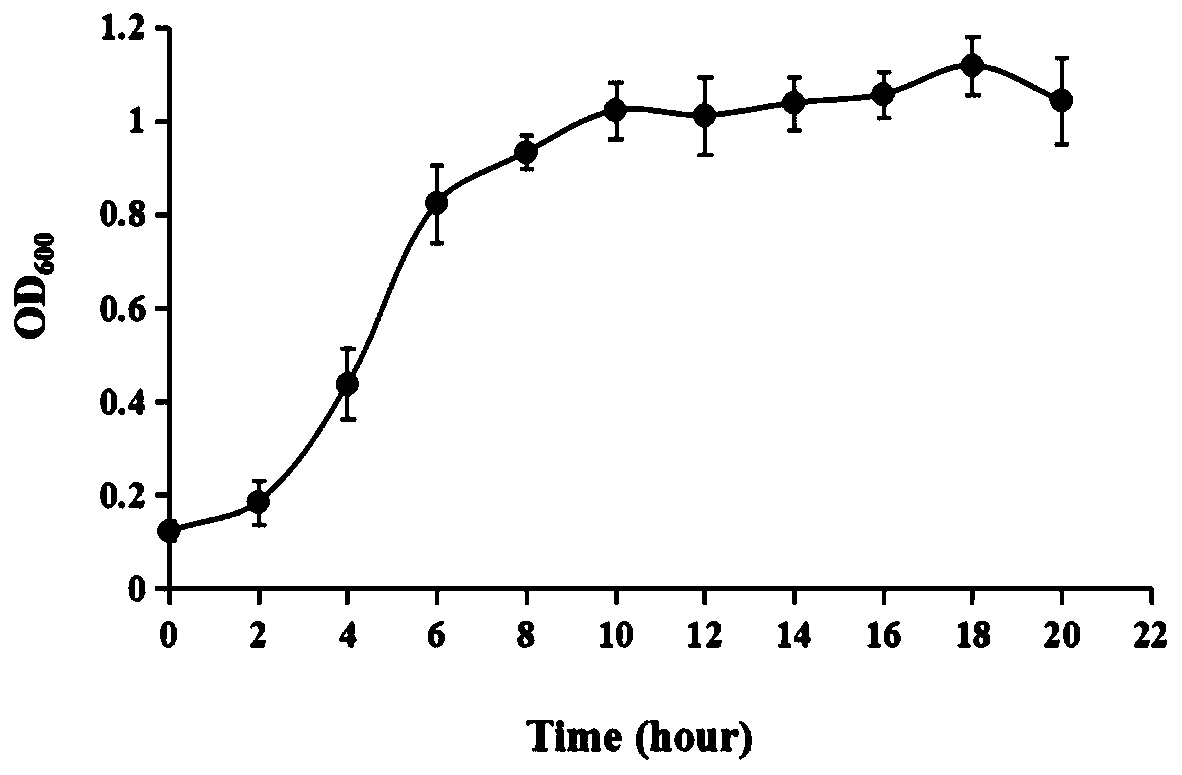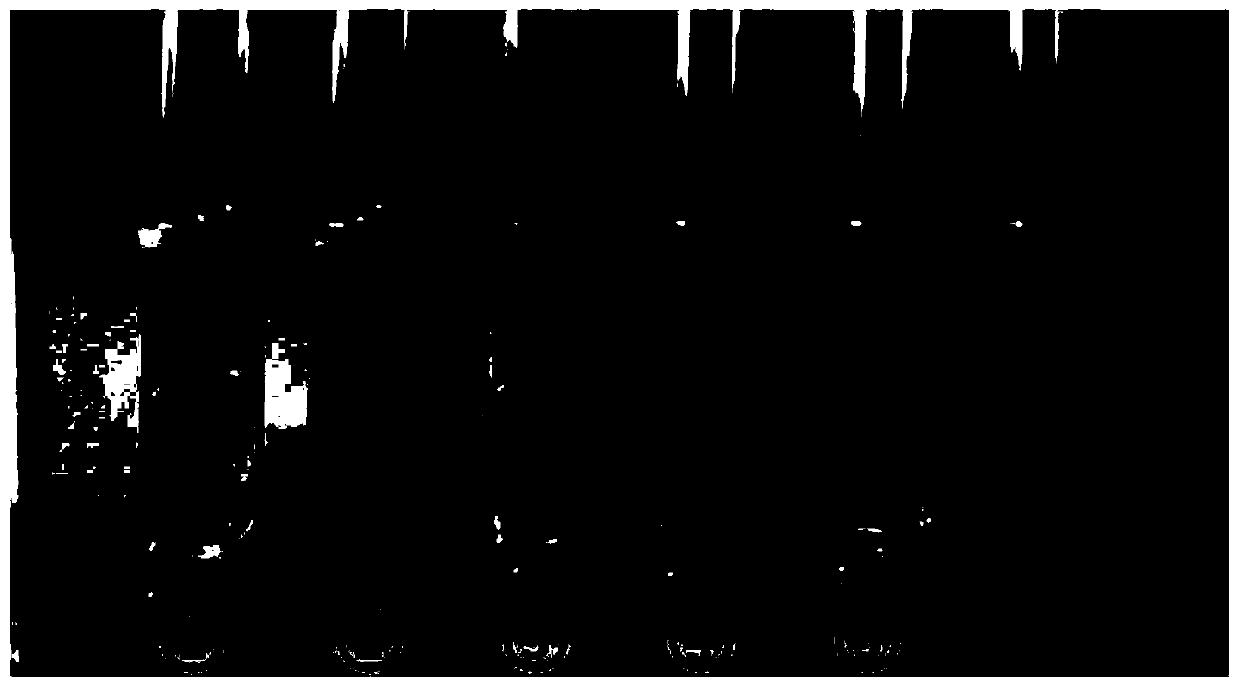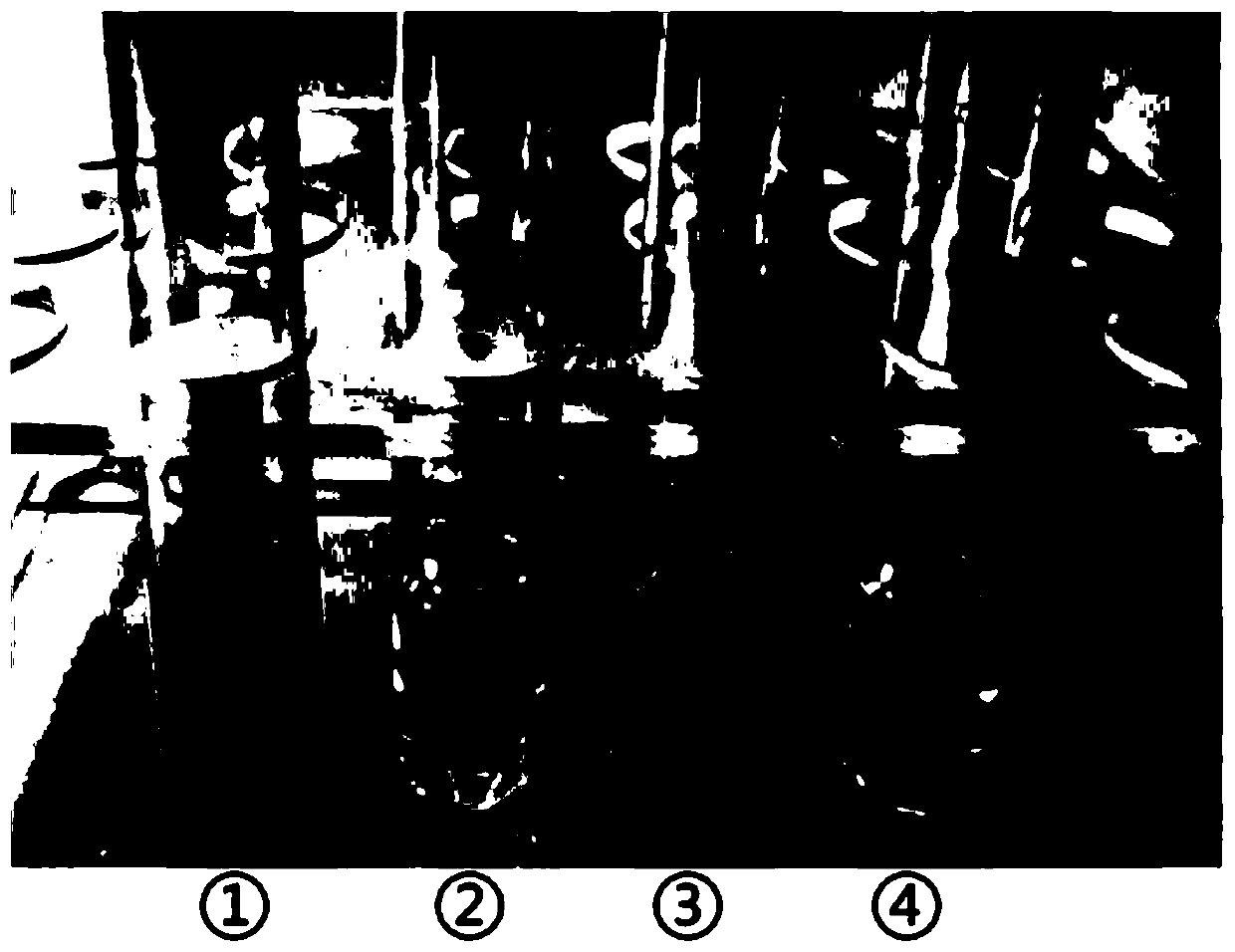Microorganism-based nitroaromatic pollutant detection method
A technology for the detection of nitroaromatic hydrocarbons, applied in the field of environmental biology, can solve the problems of cumbersome operation, limited use, and bulky volume, and achieve the effects of obvious color development, low cost, and simple operation
- Summary
- Abstract
- Description
- Claims
- Application Information
AI Technical Summary
Problems solved by technology
Method used
Image
Examples
Embodiment 1
[0049] Embodiment 1 microbial bacterium liquid preparation method
[0050] The preparation of microbial bacterial solution is affected by inoculum size, medium, temperature, pH and incubation time. Generally, the inoculation amount is between 1% and 5%, which can shorten the cultivation time. The medium used for the oligotrophic bacteria XM-1 is a basic medium containing 2,4-dinitrophenol, and the composition of the basic medium is: Na 2 HPO 4 12H 2 O 14.3g, K 2 HPO 4 3g, MnSO 4 ·H 2 O 0.028g, FeSO 4 ·7H 2 O 0.03g, trace elements 1mL, dilute to 1L.
[0051] The composition of LB medium is: tryptone 10g, yeast extract 5g, NaCl 10g, dilute to 1L. The suitable growth conditions for the bacterium are as follows: the pH is 6.5-7.5, the temperature is 25-30° C., and the rotating speed of the shaker is 150-220 r / min. Through the single factor condition experiment, the temperature is 30°C, the medium is the basic medium containing 20% LB medium by volume, and the shaker ...
Embodiment 2
[0052] Embodiment 2 Qualitative detection of 2,4-dinitrophenol
[0053] 2,4-Nitrophenol solid is light yellow granules, and the solution is yellow. Oligotroph XM-1 is a Gram-negative bacterium capable of degrading 2,4-dinitrophenol. Prepared OD 600 Add the bacterial solution of 3.0 to 20mg / L 2,4-dinitrophenol, let it stand at 30°C for 1 hour, take samples regularly, centrifuge to get the supernatant, and compare with the control solution without 2,4-dinitrophenol colors for comparison. It was found that the yellow color of the solution of the experimental group gradually changed to colorless with the prolongation of time. Get the experimental group solution and dilute 10 times, add the chromogenic agent of nitrite ion, find that the solution color of the experimental group becomes purple-red, and the solution color of the matched group is still colorless (the color change is as follows: figure 2 ).
[0054] Qualitative detection experiment:
[0055] Before reaction: 1. ...
Embodiment 3
[0058] Example 3 Semi-quantitative detection of 2,4-dinitrophenol
[0059] 1. Griess reagent is used as the chromogenic agent of nitrite ion. If the system contains nitrite ion, a purple-red substance will be produced after adding Griess reagent for reaction. Preparation of Griess reagent: Liquid A: 0.5 g of p-aminobenzenesulfonic acid, 150 mL of 10% dilute acetic acid, protected from light; liquid B: 0.1 g of α-naphthylamine, 20 mL of distilled water, 150 mL of 10% dilute acetic acid, protected from light and stored at low temperature. When in use, take equal volumes of liquid A and liquid B, put them in a brown bottle and mix them evenly to obtain the nitrite color developer. The specific method is:
[0060] 1), prepare sodium nitrite standard solution
[0061] Accurately weigh 0.10g dry NaNO 2 Dissolve in 100mL water, dilute to 500mL, and make 0.2g / L solution. Accurately pipette 5mL, set the volume to 100mL in a volumetric flask, and make a 10mg / L solution as sodium nit...
PUM
 Login to View More
Login to View More Abstract
Description
Claims
Application Information
 Login to View More
Login to View More - R&D
- Intellectual Property
- Life Sciences
- Materials
- Tech Scout
- Unparalleled Data Quality
- Higher Quality Content
- 60% Fewer Hallucinations
Browse by: Latest US Patents, China's latest patents, Technical Efficacy Thesaurus, Application Domain, Technology Topic, Popular Technical Reports.
© 2025 PatSnap. All rights reserved.Legal|Privacy policy|Modern Slavery Act Transparency Statement|Sitemap|About US| Contact US: help@patsnap.com



